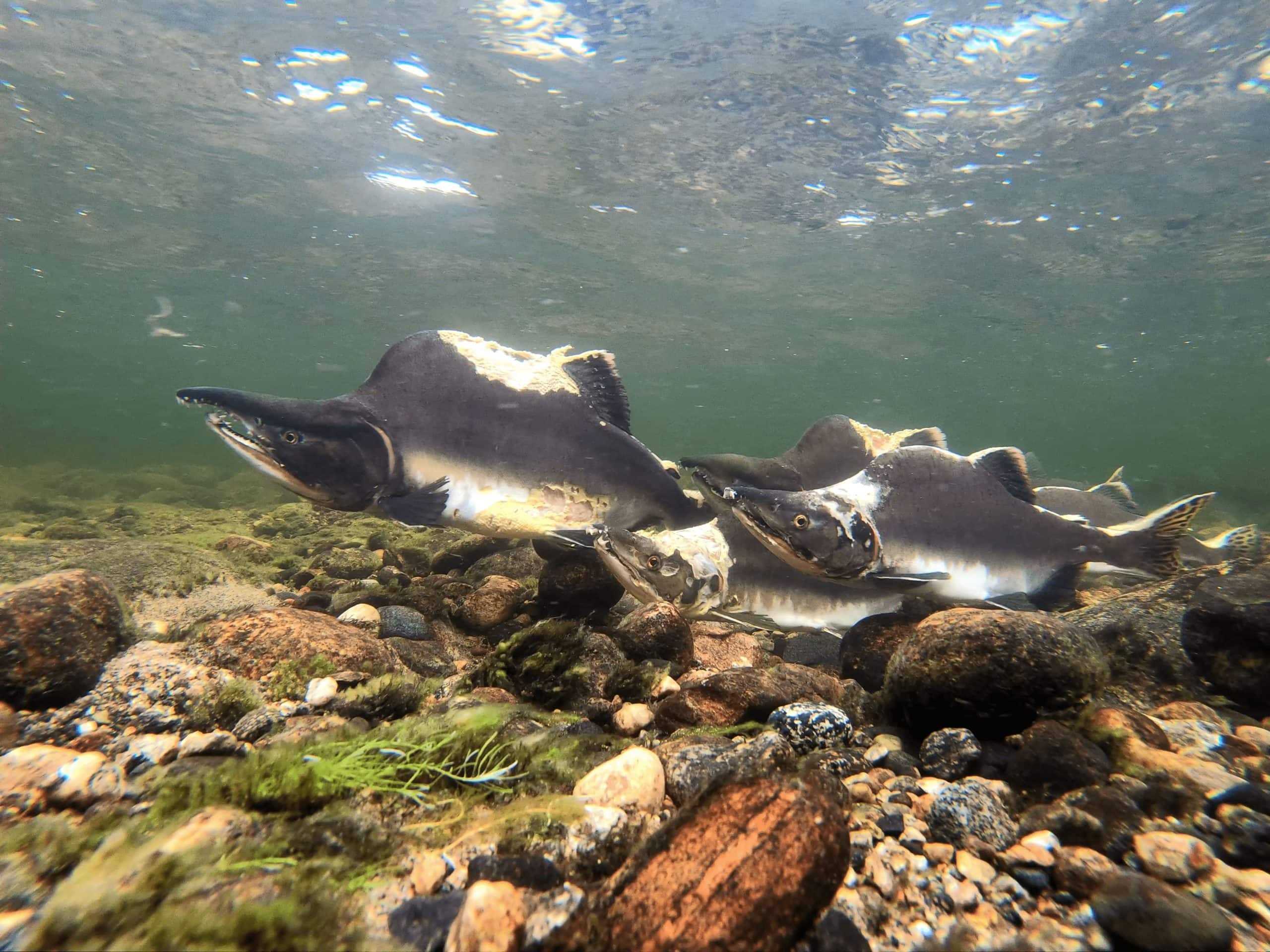Northern Norway has been swarming with pink salmon throughout July. Finnmark’s most recent conqueror, which spreads even more efficiently than the Alaska king crab and lupin, can be encountered in newspapers, fishing nets and on serve-over fish counters. Pink salmon is on the move again.
Pink salmon is an alien species that lived in silence for several years after the Kola Peninsula stockings, which began in the 1950s and ended in the 2000s. In 2017, however, the number of pink salmon increased dramatically, and in 2021 the stock exploded with up to a tenfold increase from the peaks of the previous years. Terrified by this, people began to build weir structures in Norway as early as 2021, and this year the effort is huge: weirs have been built on numerous rivers along the Norwegian coast, the largest of these being river Tana on the border between Norway and Finland. Although the structure of the Tana fishing weir is traditionally simple, something has gone wrong: the fish do not want to swim into the trap but stay under it in the thousands.
It should be noted, however, that the Norwegian weirs in rivers smaller than the Tana have mainly worked quite well in both fishing for pink salmon and releasing Atlantic salmon. Of course, this is no comfort for the Finns because the Tana weir, which is critical for Finland, does not work. The weir has had to be opened several times when conditions have become so difficult due to water temperature, water shallowness or just absolute fish density that there has been fear of Atlantic salmon suffering. In august 2023 the weir has been kept open daily from morning to evening to ensure the migration of the native salmon. In changing situations opening the weir has been the only sensible option, though at the same time large numbers of pink salmon have passed through. Fortunately, however, some of the pink salmon have ended up in the seines of the local removers after they have passed through.
The present situation marks the beginning of a race in which researchers seek to find out what the presence of pink salmon actually means for the northern environment and its natural species. So what do we know about the situation?
It is certain that soon after spawning, the pink salmons die in the rivers. It is uncertain where all the carcasses will end up, and where the biggest ecological impacts will occur. It is certain that the carcasses provide a completely new kind of food for the organisms in the river, given that the cornerstone of the food webs of the northern rivers has traditionally been the leaves that fall into them in the autumn. It is unclear what the new form of food means for river decomposer and consumer communities and thus for food webs. It is certain that the decomposition of the carcasses will release considerably more nutrients into the rivers than before. It is uncertain whether the nutrients will remain at the disposal of the primary producers in the river ecosystem, or whether they will be immediately washed back into the Arctic Ocean.
Thus, the environmental impacts of a mass invasion may even lead to unexpected situations. In fact, a new source of energy could even improve the productivity of the river and the survival of the Atlantic salmon fry, although the changes are likely to take place at the expense of native biodiversity. Interesting information will also be coming up in 2025, the next year when pink salmon will head up the river: did the (functioning) weirs manage to reduce the number of pink salmon in the next migration, even though there are likely to be more and more pink salmon coming from Russia? The situation therefore requires monitoring, action and research, and the funding to implement them.
It is August, and despite the Norwegian weir, this summer over a 100 000 of pink salmon swim, spawn and die in river Tana. Only time and research will tell what the future of the river looks like.
Aino Erkinaro is a doctoral candidate at the University of Oulu, who is studying the ecosystem effects of pink salmon in Utsjoki in August-September. The work is part of a research project funded by the Academy of Finland and the University of Oulu (www.oulu.fi) and carried out in cooperation with the Finnish Environment Institute.
Heidi Blom is a project coordinator in Natural Resources Institute Finland, working on an IBA-funded invasive alien species project (barents-ias.info). The project develops fishing methods suitable for pink salmon and disseminates information and good practice on invasive alien plants control in cooperation with WWF and Rural Women’s Advisory Organization.
Originally published as a blog post by Natural Resources Institute Finland.
